Mauthausen Concentration Camp - Sunday April 14, 2019
Following the recommendation of a friend, I spend the last day of my visit to Austria on a day trip to the Mauthausen concentration camp, now called the Mauthausen memorial park.
I spent something like two hours in my hotel clicking around the internet and taking careful notes before securing a train ticket for my train > train > bus > [tourism] > bus > train jouney. A bus took me from the train station in Mauthausen to a spot near the concentration camp and, later in the afternoon, onward to Linz, where I knew I could simply ask for the next train back to Vienna. Because the train/bus timing was good, and because the bus driver was extremely helpful, travel worked out very well. It is a bit of a hike uphill to the memorial. About a mile, but not strenuous. Long enough to have a good think.
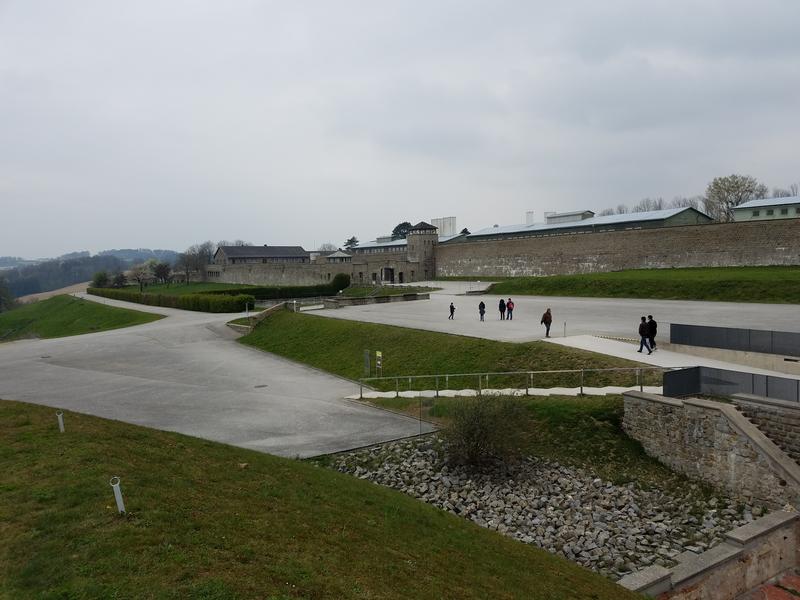
Mauthasen memorial park. Around the time of liberation by the allies, May 5, 1945, the many wooden buildings of the camp were dismantled. Artifacts were destroyed by nazis to hide wrongdoing or taken by concerned individuals to keep evidence from being destroyed. Because the stone walls were not dismantled, the site is largely intact.
Later, a few buildings were rebuilt, artifacts gathered, stories recorded, and a museum constructed. People from over 40 nations were tortured and killed here. In 1945, as other death camps were evacuated, many prisoners were evacuated to Mauthausen.
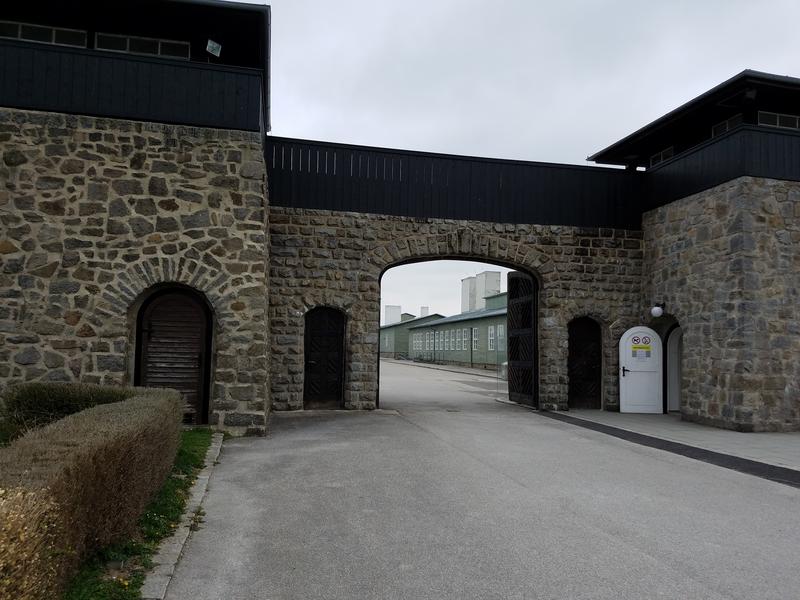
This is the entrance. Construction (fencing first, the stone walls later) began in August 1938, a mere 3 months after the Nazi annexation of Austria. Mauthausen was an unsusually brutal slave labor camp. The Nazis expanded the camp several times, but always aimed to work and torture people to deaths door, at which time they were transferred to a separate walled area and left to die. While other camps held people for the purpose of extracting labor from them, slowly working them to death, the aim at Mauthausen was to quickly work people to death. According to a Wikipedia article I read later, Mauthausen was where political enemies of the nazis, typically the intelligentsia, were sent to be punished.
Months after my visit I read Viktor E. Frankl's Man's Search For Meaning, an account of his experience in the concentration camps. As described by Frankl, a transfer to Mauthausen was considered a death sentence. Specifically, he describes being transferred to another camp. While on a train between camps, the prisoners don't know where they are going. When the train passes through a rail hub near Vienna, the prisoners are fearful that the train will turn towards Mauthausen. When the train continues straight instead of turning, the prisoners cheer.
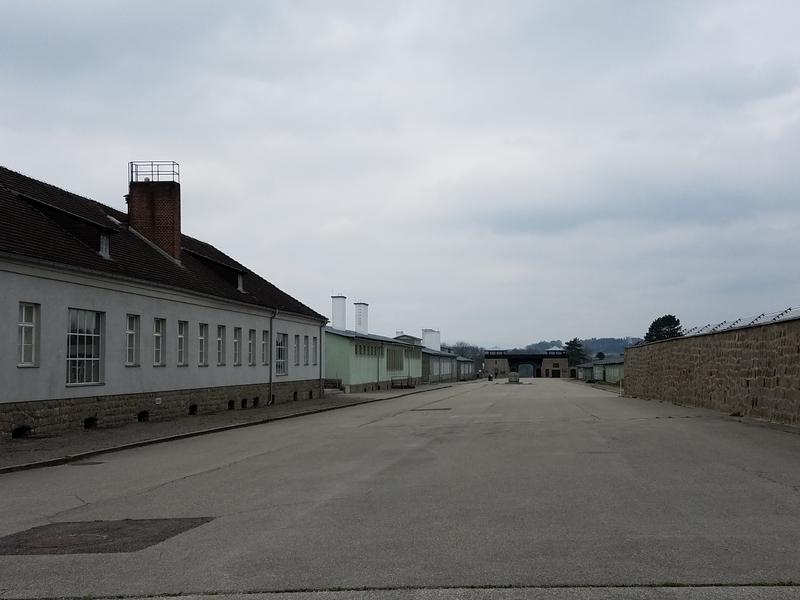
Inside the camp, looking back towards the entrance. As I get further from the entrance, the horrors increase. The museum (leftmost building) documents the atrocities and shows the artifacts. Systemic lethal brutality. Arbitrary lethal brutality. Medical atrocities. This is one of the places where Nazi doctors experimented on prisoners, or simply had them executed so they could study the corpse. Behind the wall to the right was where prisoners were left to die.
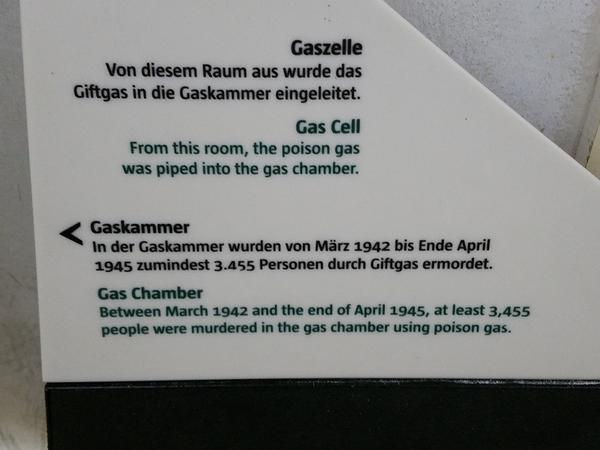
In the basement of what is now the museum was the small gas chamber (only the walls remain) and 3 of the 5 original cremation ovens. 3455 people died in the gas chamber. Nearly 1000 died in a portable gas chamber that was also used at the death camp. Over 100 thousand people died of systematic brutality in this place.
The museum was extensive enough to relate the magnitude of the atrocities committed here.
I couldn't bring myself to photograph the ovens or other artifacts of death. Doing so felt too much like voyeurism.
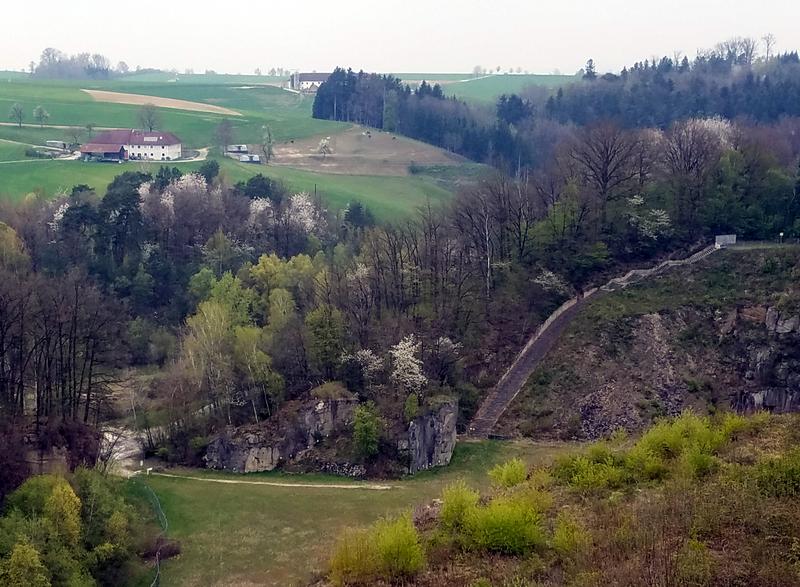
The quarry, the main work site, viewed from a spot near the main entrance. Most inmates knew that they were there to die more than they were there to work. The stairs up from the quarry, right, were called the stairs of death. Inmates were forced to carry heavy stones up the stairs.
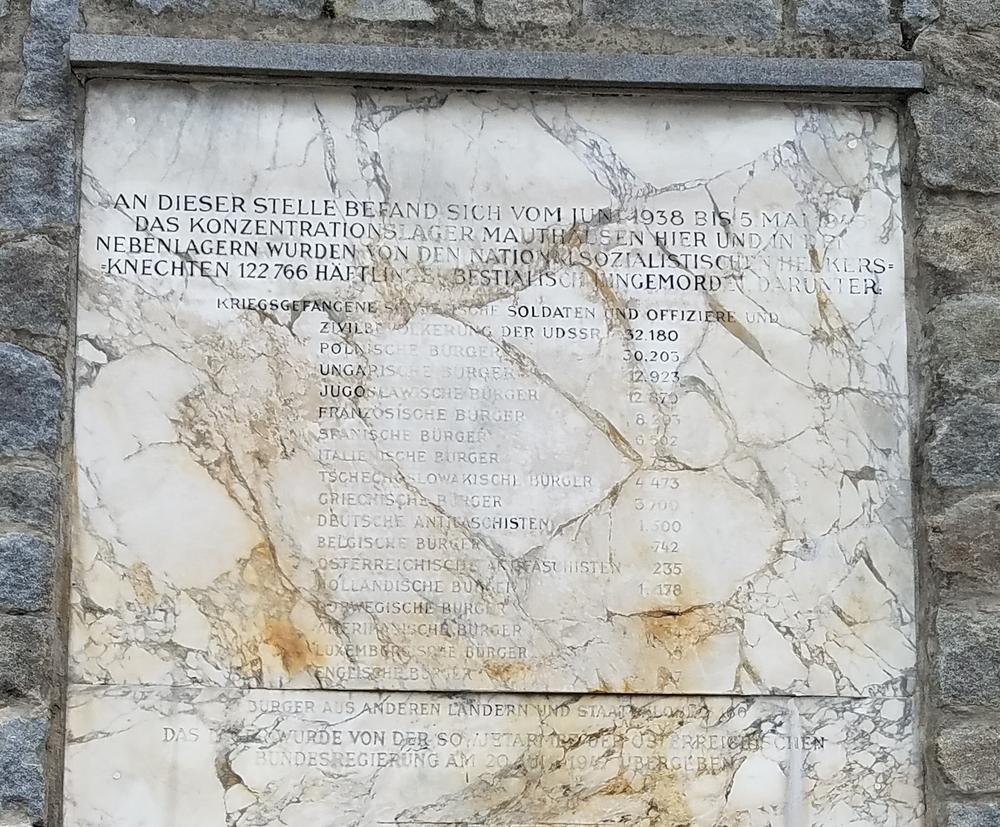
People from over 40 countries died here, including 34 Americans.
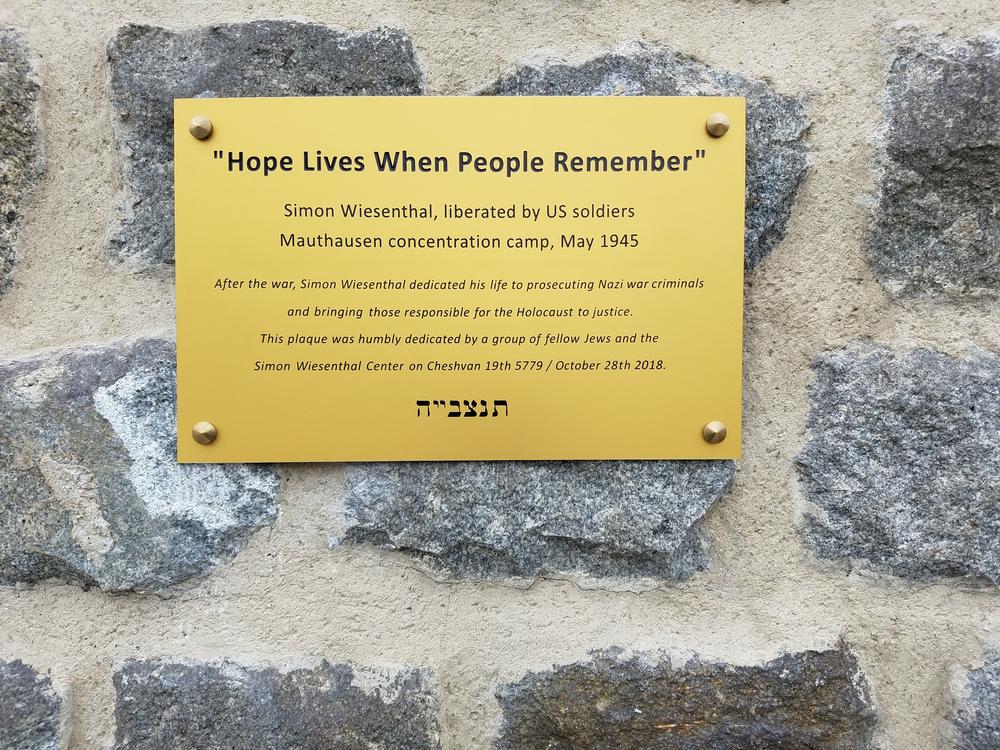
This memorial site includes monuments and plaques representing many nations and peoples. The larger memorials are placed ouside the entrance of the camp. Smaller memorial plaques are inside the camp.
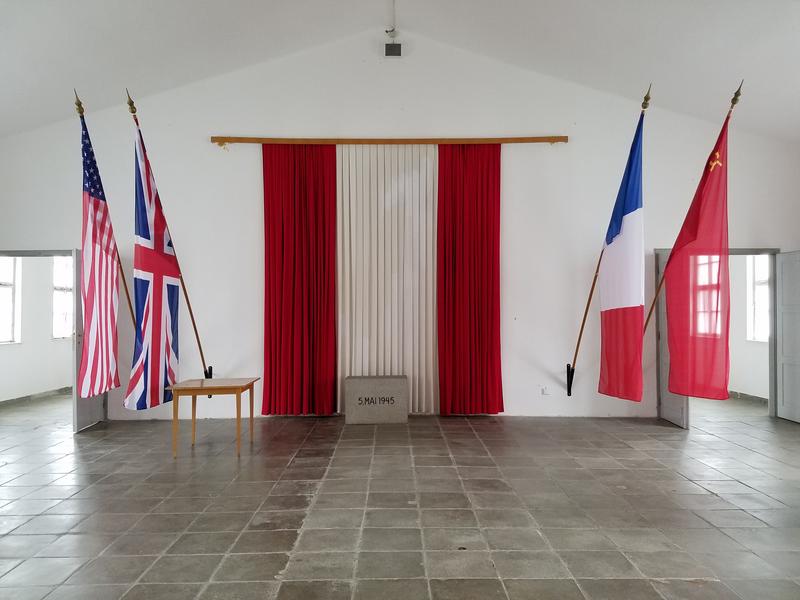
This building contained a chapel and a memorial to honor the liberators. The inscription reads "5.MAI 1945".
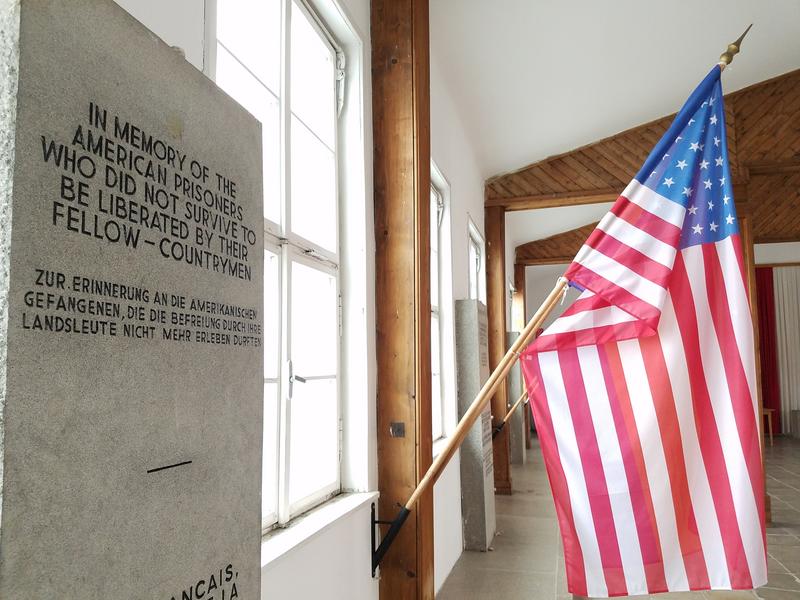
A USA memorial, also in the chapel building.
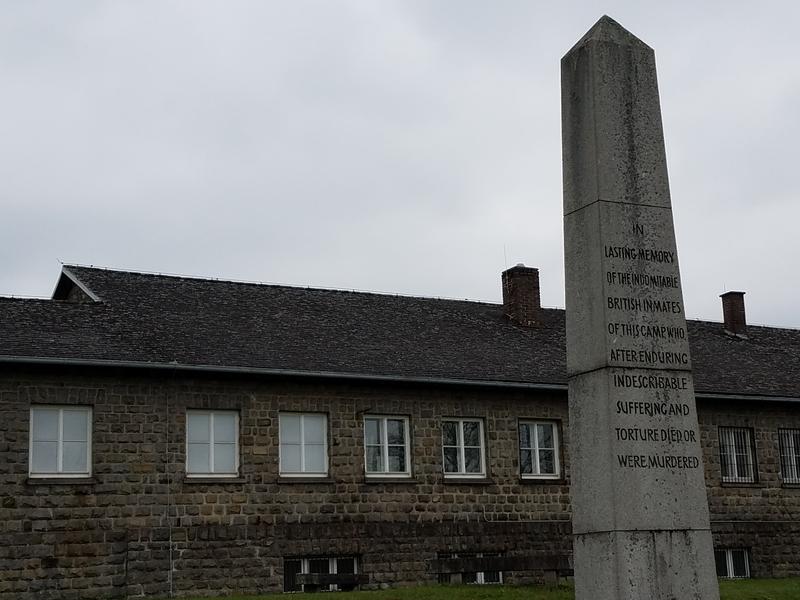
In the forground is the British memorial. In the background is the only original building still standing, an administration building. Other buildings are reproductions of the original wood buildings or, in the case of the museum, new construction.
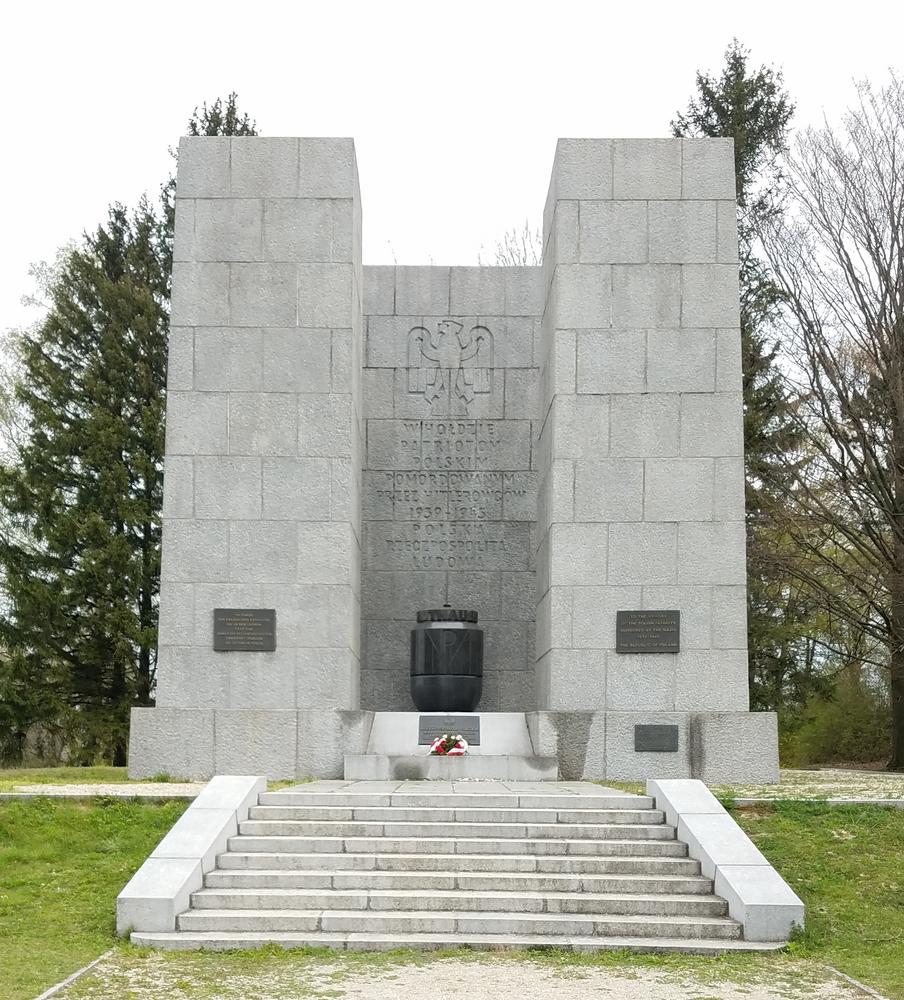
Polish memorial.
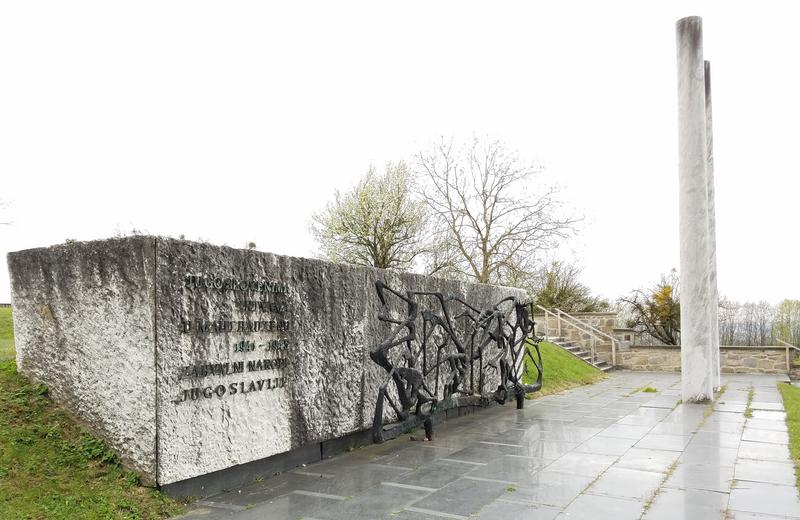
Yugoslavia memorial.
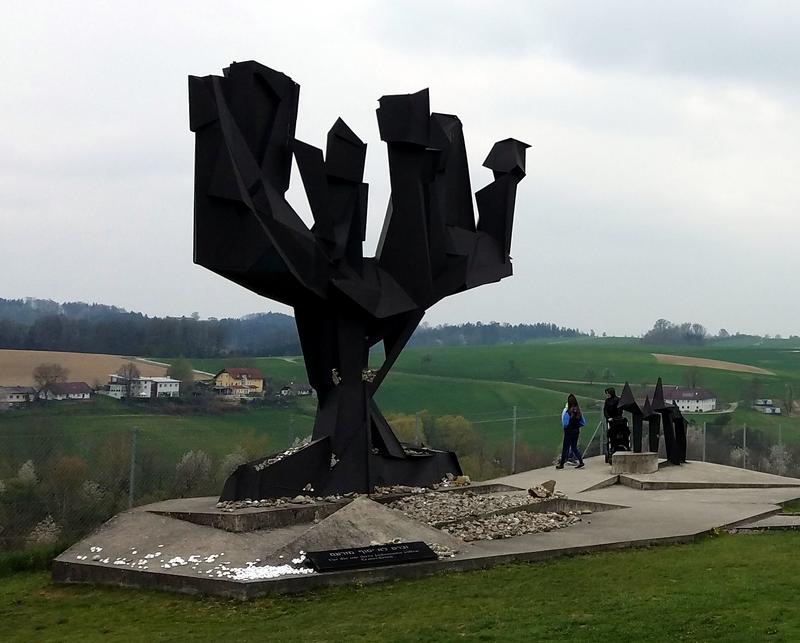
The Israel memorial bears witness to the quarry.
As expected, this was a moving experience. As I later learned while reading more about Austria, post World War I democracies all over Europe proved fragile. Similar to Berlin, anti-sematism was a major force that tore the parlaiment in Vienna into factions. Mauthausen reminds me that democracy is fragile, that things can go from bad to unthinkable in a matter of months, and that the people of a nation can delude themselves into believing they are living righteous lives even as children suffer in concentration camps within that nation's borders.
Back to
Jonathan's Page
Mauthausen 14 April 2019 / Jonathan Krall / revised January 2020












